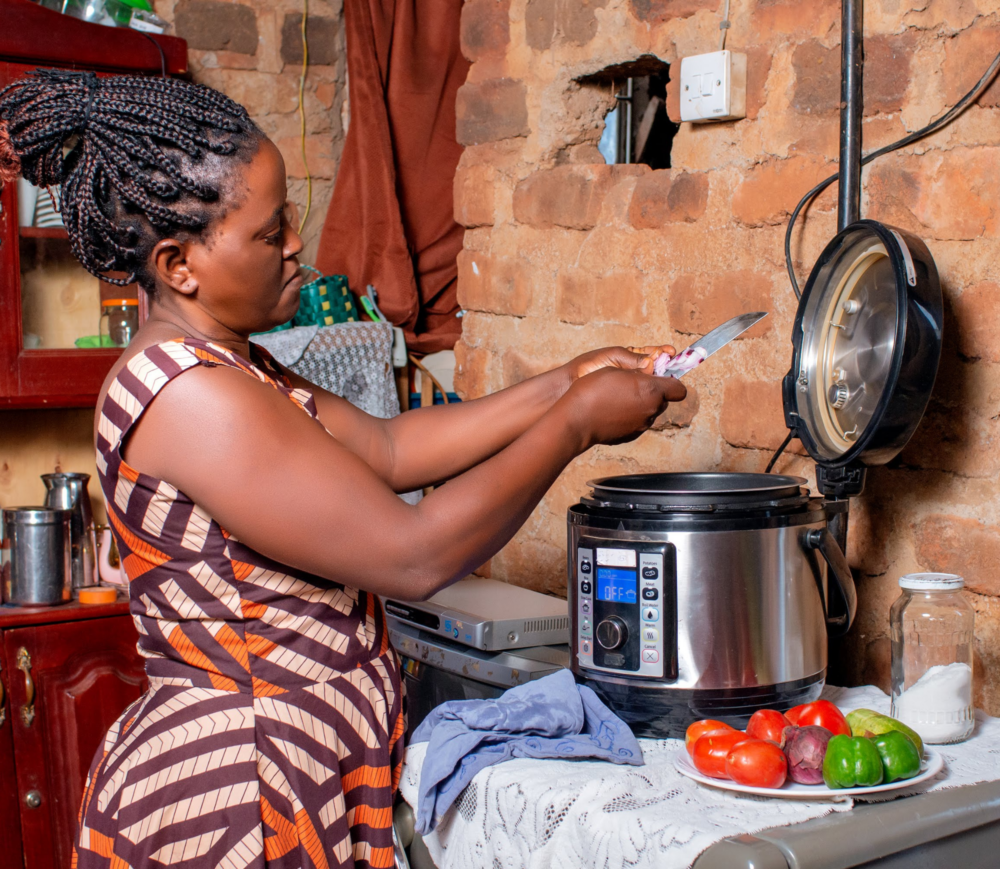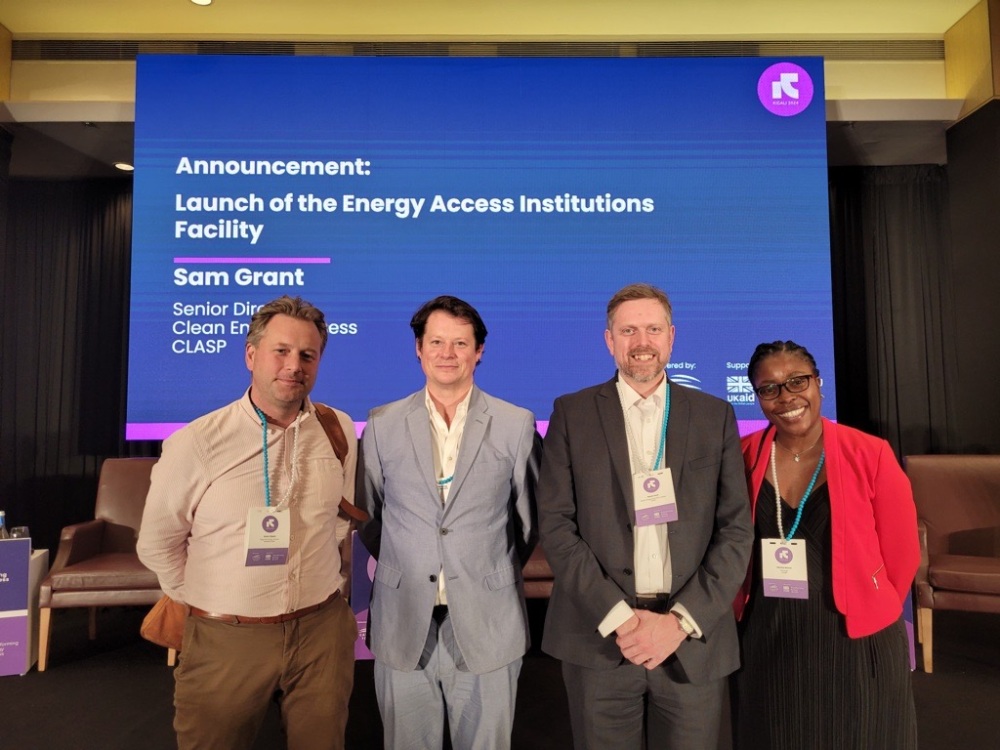2021 Solar Appliance Technology Briefs Analyze Key Trends in Rapidly Evolving Markets
These briefs consolidate the latest market intelligence, technology trends, and consumer impacts and chart the pathway to commercialization for 11 off- and weak-grid appropriate technologies.
We are excited to announce that CLASP, on behalf of Efficiency for Access, has published a series of 2021 Solar Appliance Technology Briefs for off- and weak-grid appropriate technologies. The briefs synthesize the latest market intelligence and chart the pathway to commercialization for 11 disruptive technologies that are expected to catalyze energy access and sustainable development.
The first iteration of the LEIA Technology Summaries was published in 2017 to help the newly established Efficiency for Access Coalition navigate a nascent market. At the time there was limited data available on market trends and performance of appliances suitable for resource-constrained settings. Since then, CLASP, with the help of its partners, has assembled a wealth of information on a number of these technologies across market, consumer and impact research, and the Efficiency for Access Coalition members have invested nearly £130 million in the high-performing appliances space.
For a quick primer with most salient details from the briefs, see this collection of two-page snapshots.
The technologies are grouped into a four-part series based on market maturity:
Near-to-market Technologies: Fans and TVs
The markets for fans and televisions are mature compared to other off-grid appliances. Fans and TVs have a relatively high penetration rate across key markets in South Asia and sub-Saharan Africa when compared to other off-grid appliances. They are more energy-efficient and more affordable to a wider range of customers.
Over 670,000 off-grid fans and 427,000 televisions were sold in 2019
Fans: Over 670,000 off- and weak-grid fans were sold globally in 2019, as they are one of the most cost-effective and life-saving off-grid cooling solutions. With positive trends in off-grid fan affordability and efficiency, demand is predicted to grow, and the obtainable market is projected to reach 48 million households by 2030.
Televisions: The efficiency and affordability of off-grid televisions have improved by 48% and 44% respectively over the past few years, as they are one of the most coveted off-grid appliances by consumers. While the market potential for off-grid TVs is growing, last-mile distribution challenges and insufficient consumer financing prevents the market from reaching its full potential.
Emerging Technologies: Solar Water Pumps and Refrigerators
In a survey of 130+ energy access practitioners, solar water pumps ranked first in perceived consumer impact. Refrigeration ranked third. Both technologies help users improve productivity by reducing the time it takes to complete household chores and lead to better health outcomes in the form of healthier diets.
Solar water pumps and refrigerators rank are among the top 5 most impactful household appliances
Solar Water Pumps: Improving access to solar irrigation can improve crop yields by up to 3x and build resilience to droughts and unpredictable weather patterns. However, the market remains variable in Sub Saharan Africa and South Asia. To reach new customers, one must leverage new business models and expand partnerships to improve affordability.
Refrigerators: An increasing number of refrigerator manufacturers have expanded their market to target off-grid households and small businesses. Products sampled from local retail markets in the 2019 Global LEAP Awards had improved by 36% over the 2017 period. This class of efficient, off-grid appropriate refrigerators hold promising potential to provide reliable cooling services making it an overall ubiquitous household appliance.
Horizon Technologies: Walk-in Cold Rooms, Electric Pressure Cookers, Solar Milling, E-mobility
Despite their strong potential to unlock higher tiers of energy access and economic and social development, horizon technologies remain far from achieving scale in off- and weak-grid markets. The maturity of these nascent, horizon technologies will benefit greatly from an enabling environment fostered by a diverse set of stakeholders with aligned objectives including governments, energy service providers and the private sector.
Over 70% of all EPC sales take place in developed economies with reliable grid connections
Walk-in Cold Rooms: Establishing cold chains as extensive and reliable as those in industrialized countries would enable developing countries to raise food supply by 15% – about 250 million tonnes. A complete cold chain involves multiple stakeholders, and in the agricultural context this would include farmers, aggregators, transportation companies, warehouses and processing centers.
Electric Pressure Cookers: EPCs are highly energy-efficient appliances and can expand and improve clean cooking access for the 2.6 billion people worldwide who rely primarily on biomass cooking fuels. Efforts to improve design, consumer financing and awareness of their health benefits can help accelerate their market growth.
Solar Milling: Solar milling has the potential to enhance farming efficiency, increase farmer revenues, promote food security and empower women. On-grid solar-powered mills are slowly replacing diesel mills, but progress remains slow in off-grid settings as an ideal scenario must balance three parameters: efficiency, throughput as well as capital & operational cost.
E-mobility: Battery-powered E-mobility transportation modes eliminates internal combustion engine (ICE), that releases toxic particulate matter and carbon dioxide to the environment. The uptake of E- mobility is strong and improving across parts of Asia and Sub-Saharan Africa, however penetration lags in rural areas, and product quality remains an issue. To address core barriers, a deeper understanding of use cases is needed.
Enabling Technologies: Interoperability, ICT, Permanent Magnet Motors
Household appliances have become a major driver for the off-grid solar sector. The global addressable market for off-grid household appliances is an estimated USD 12.6 billion, with the potential to reach USD 25.3 billion by 2030. Interoperability, ICT and PM motors are central to this transition.
Adopting a standardized communication protocol across 25 appliances would lead to an estimated USD 1.5 million in savings for the off-grid solar industry.
Interoperability: Improvements in interoperability would allow customers wishing to upgrade their system or add an appliance to their household to not have to do so through the company that sold them their solar energy kit. The predominant model is that of non-interoperable systems which use brand-specific connectors combined with proprietary digital protocols.
ICT: ICT is a broad term that covers technologies that enable communications — such as radio, television, mobile phones, computer and network hardware, satellite systems, and internet of things (IoT)– and the services provided through these devices. ICT can also enable the uptake of other appliances highlighted in the brief series. For example, access to mobile phones has been a key enabler in the mobile money-driven PAYGo solar home system sector, helping off-grid communities gain access to electricity and contributing to SDG7.
Permanent Magnet Motors: PM motors are a type of electric motor that promise to be more efficient than their more common counterpart, induction motors. PM motors can play a crucial role in addressing efficiency-related challenges in resource-constrained settings across the full grid spectrum. Motors are the primary movers in almost all machinery and appliances. PM motors can be used with smaller power supplies, tolerate low or fluctuating voltages and have longer run times due to higher efficiency. Ideal applications for PM motors in solar appliances include solar water pumps, fans and refrigerators.









